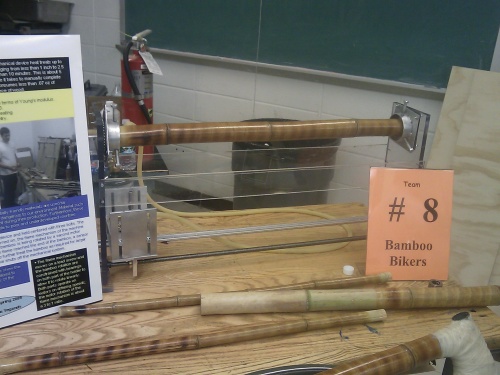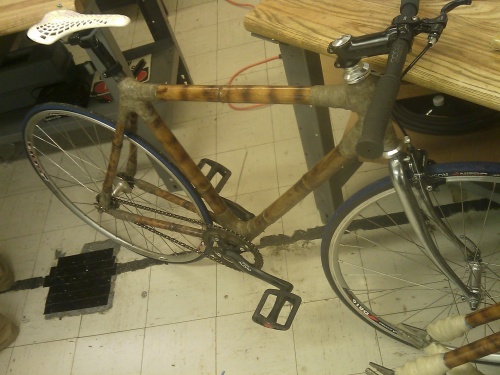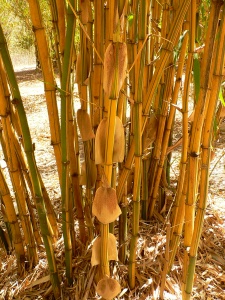In partnership with students at Columbia University’s undergraduate School of Engineering and Applied Sciences, the Bamboo Bike Project brings you news of technological exciting advancements that are helping us construct stronger bamboo bikes more efficiently.
Costi Quffa, recent mechanical engineering graduate, was one of a team of students who designed a machine that automatically flame-treats bamboo, as part of a senior capstone project. Interested in the Bamboo Bike Project, Costi got in touch with Marty and asked what kinds of engineering innovations could benefit the project. When Costi discovered that current flame-treating processes were very time intensive and labor intensive (it takes 20 minutes to treat a piece of bike-length bamboo by hand, and there are seven bamboo rods in each bike), Costi had his angle. He would create a mechanized form of bamboo heat treatment.

Bamboo Flame Treater
Costi’s bamboo treater is a robust prototype. It employs a propane flame, and motors that can be solar powered. When a piece of bamboo is placed in the machine, a motor on the bottom pushes a carriage carrying the flame back and forth along the length of the bamboo. A motor on top rotates the piece of bamboo itself, ensuring that all areas of the bamboo section are evenly treated. The machine can make multiple passes over the bamboo if needed. It takes this machine five minutes to treat a piece of bamboo approximately three feet in length.
Bamboo is not uniform, so treatment machines must be adaptable and able to work with many different sizes and diameters. Accordingly, Costi’s heat treater has an adaptable carriage that allows users to alter the distance between flame and bamboo. The machine can also be adjusted to treat all lengths and sizes of bamboo.

Bike treated with the new flame treater
Costi and his fellow engineers see the versatility of the flame-treater as giving it an application beyond bamboo bikes to bamboo scaffolding, furniture, and other infrastructure. Some are already investigating the humanitarian impacts of using this machine to strengthen bamboo structures used by refugees in settlements affected by cyclones/tsunamis. What a fruitful partnership!



